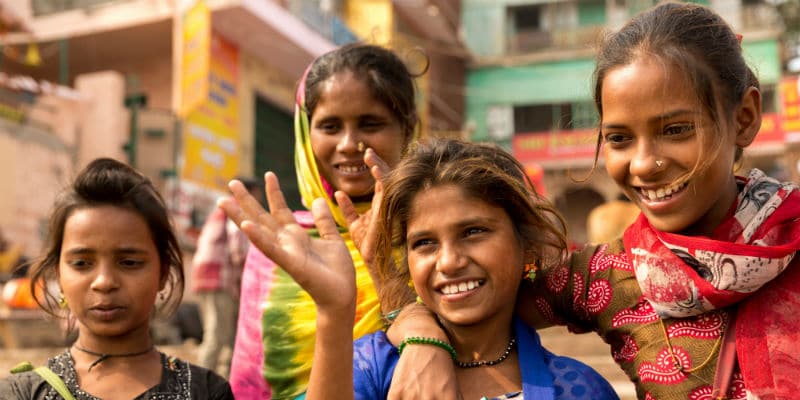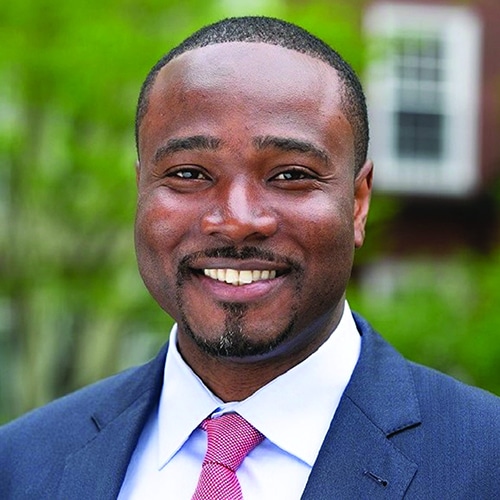Today, October 17, the United Nations commemorates its annual International Day for the Eradication of Poverty (a.k.a. “World Poverty Day”). For the first time in our lifetime, the percentage of the global population living in extreme poverty, defined as those living on less than $1.90 a day, is less than 10%. Many celebrate this achievement. But maybe they shouldn’t.
Escaping extreme poverty, that is, graduating to live on more than $1.90 a day, isn’t the same thing as living a prosperous life. In fact, billions of people who don’t “technically” live in extreme poverty still live supremely difficult lives characterized by a severe lack of access to many basic things such as gainful employment, quality healthcare and education, a decent place to lay their heads at night, and economic security. Nearly half the world’s population, for instance, lives on less than $5.50 a day, or barely $2,000 per year—an amount that still causes severe economic hardship for most people. Writing about this phenomenon, development expert Nancy Birdsall notes, “People do not [automatically] jump into a middle class way of life at $2.01 a day.” Simply put, escaping extreme poverty is too low of a bar and should not be our measure for success.
Yet, well-meaning governments and development organizations continue to spend billions every year in an attempt to end extreme poverty. This vision to end extreme poverty is understandable, especially when you see men, women, and children, often through no fault of theirs, suffer the effects of poverty. It is so distressing that it creates a seismic magnetic pull that compels one to provide the resources people living in poverty lack, such as food, schools, toilets, institutions, and hospitals. But a strategy focused on addressing the symptoms of poverty is slow at best, and often doesn’t move the needle much.
I experienced this magnetic pull in 2008 when I began immersing myself into the world of poverty and development and decided to found an organization called Poverty Stops Here with several devoted friends. Through the course of the life of the organization, we raised more than $300,000 to help struggling communities in Nigeria by providing resources. We built wells, funded schools, and provided some microloans. But every community we worked with is still poor today; and most of the projects we executed, especially the water well projects, helped temporarily but ultimately proved unsustainable. Just last month, after running the organization for ten years, we shut down operations. In many ways, Poverty Stops Here was a microcosm of the larger development industry: we do our best and we give our all, but little progress is made in truly helping people get ahead in life.
Surely there must be a better way.
What if instead of trying to end extreme poverty, we focused on creating lasting prosperity—such that more and more people improve their economic, social, and political well-being in a sustainable manner? The difference may seem subtle, but it requires a fundamentally different approach to development.
Prosperity is not generated through an influx of well-intentioned resources to poor countries. Instead, it takes root when organizations invest in what we call market-creating innovations. These types of innovations transform complicated and expensive products into ones that are simple and affordable, so many more people can access them. What makes them especially powerful is their unique ability to create jobs and generate much needed tax revenues which then fund the development of a region’s infrastructure and institutions.
Consider the example of Mo Ibrahim. In the late 1990s, when this Sudanese entrepreneur first conceived of setting up a mobile phone company in Africa, his colleagues said he had lost his mind, since many of his potential customers were not only living in poverty, but also living in countries with undeveloped infrastructure and institutions. But Mo Ibrahim saw something different. Without access to mobile phones and easy communication, people had to trek miles to visit family members or relay an urgent message. It was in this struggle that the entrepreneur saw an opportunity to make telephony accessible and affordable, so in 1998 he founded Celtel.
In just seven years, Celtel was providing cell phone service to millions of Africans who couldn’t afford phones years earlier, ultimately generating immense prosperity not only for himself, but eventually for hundreds of thousands of people. Mr. Ibrahim’s success inspired other investors to invest billions of dollars in the region. The resulting telecommunications industry has not only democratized communication, but has also created close to four million jobs while generating more than $15 billion in annual taxes. These are taxes that governments can now to build new infrastructure and improve institutions. By 2020, the industry is estimated to be worth more than $210 billion.
It is by developing new markets targeting people living in poverty that societies can begin their path to prosperity. That’s because, when new markets are created, such as the one created by Mo Ibrahim’s Celtel or Henry Ford’s Ford Motor Company, they serve as a foundation for future growth and development. Think for instance, of how the Model T generated millions of jobs and billions in taxes from gasoline, auto parts, and tire sales that funded America’s road infrastructure.
And so, instead of trying so feverishly to end poverty, what if we set our sights on a higher goal? By identifying and investing in market-creating innovations, we can do much more than just stop poverty—we can create inclusive prosperity. That would be a cause for celebration.



